

Suunto Blog
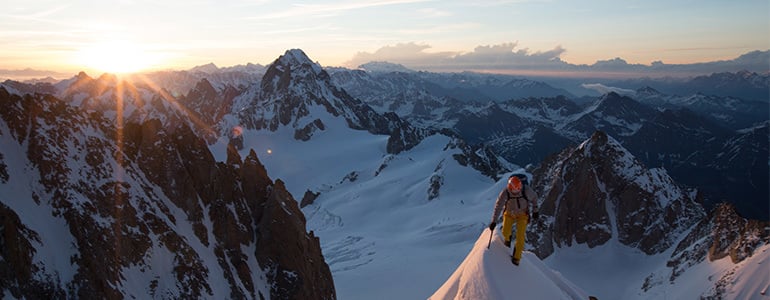
Good times in the Himalaya for Ueli Steck
For the last two weeks, Suunto ambassador and alpinist Ueli Steck has been in Nepal acclimatizing to the higher altitude to prepare to climb the notoriously difficult south face of 7861 m Nuptse. After recently running up a 6000 m mountain there in his running shoes, it's clear things are going well so far for the Swiss Machine. Here's part two of our four part series on Ueli's Nuptse expedition.
Ueli climbing Lobuche Peak. © Ueli SteckAfter arriving in Nepal’s Khumbu Valley two weeks ago, Ueli Steck has been having a blast running, climbing, bouldering and camping out while acclimatizing to the higher altitude. He and his climbing partner Colin Haley are preparing to climb Nuptse, a 7861 m mountain only 2 km away from Everest. No one has successfully climbed Nuptse via its highly technical south face since Valeri Babanov and Yuri Koshelenko first did it in 2003.
Click here to read more about why Ueli wants to climb Nuptse via its difficult south face
After completing his #82Summits project over summer, Ueli is "super motivated". © Ueli Steck
Ueli and Colin intend to climb it in the far more challenging alpine style, which means a one-time single push climb, without leaving fixed ropes. Ueli says he has acclimatized and is ready to climb. “Yesterday, I ran up Lobuche Peak from Dzongla,” he says. “It was pretty nice exercise. Summiting a 6000m peak in running shoes is quite fun!”
Click here to read about how Ueli has progressed as an alpinist
The view from Lobuche east where Ueli camped for two nights. © Ueli Steck
Ueli is waiting for Colin to get acclimated. The well known American climber experienced some altitude sickness and went down to Deboche village to recover. While he waits, Ueli has been having a good time in Dzongla. He also camped for two nights on Lobuche Peak. “It’s very nice to be back in the Khumbu Valley,” he says. “It’s great to see that life is going on for the Sherpas [after the earthquake]. “There are only a few tourists in the area so it’s quite calm.”
Stay tuned for the third part of our series on Ueli's Nuptse expedition: climbing Nuptse's south face
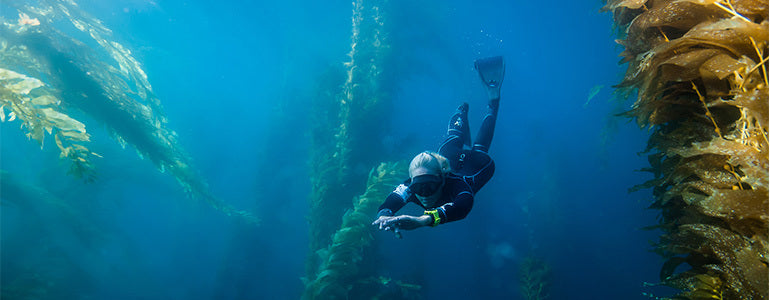
Learning the joy of freediving
You don’t need to be able to hold your breath for minutes to enjoy freediving. Below the Scuba Diver Girls’s Margo Sanchez explains why diving without gear can lead to the best underwater experiences.
Scuba Diver Girls Stephanie Adamson & Margo Sanchez are based in California. © Scuba Diver Girls
Why freedive? There is something very freeing about diving without heavy gear. It is a magical experience when you drop down into the silence of the ocean, but hear the distant chirp of a dolphin or crackling of shrimp. The sport gives myriad benefits over time. Learning the breathing and relaxation techniques teaches you how to relax your mind and body in many situations, both in and out of the water. After practicing, you get more proficient at using those techniques and can challenge yourself to extend the amount of time you can stay under the water.
Press play and watch a harbour seal play with the Scuba Diver Girls How did you get into it? I started out scuba diving and gained my passion for the underwater world with a tank on my back. But it wasn’t until I started diving with sharks that I realized I was not able to get close while I was blowing bubbles loudly on open circuit. I decided to try taking off my tank and diving down with them while holding my breath instead. Once I realized that this brought a whole new dimension to my diving, I decided to take the beginner freediving training with SSI (Scuba Schools International).
“As you swim through the forest, the sun streams through the kelp canopy like stained glass.”
Best freediving experiences? We have been all over the world both scuba and freediving. There are beautiful coral reefs in remote locations of the world that are breathtaking as you skim along the top checking out the little critters that flit in and out. Waking up at dawn in tropical locations to silently slip into the water and then skimming across the surface, looking for what the location has to offer, before finally gliding through its depths is one of the most exciting experiences a diver can have. Click play to see the beauty of our underewater world and the freedom found in exploring itStop, you’re making us jealous! But go on anyway… Probably my favorite place to freedive is right in our back yard in La Jolla California. Dropping down beneath the surface into a thriving kelp forest is an ethereal experience. As you swim through the forest, the sun streams through the kelp canopy like stained glass and a multitude of fish congregate while you swim by. Sometimes you get a visit from a frisky sea lion or a harbor seal tugging on your long fins while other times you swim gracefully alongside a sleek grey shark while it looks into your eye and you hold a common respect for each other through that connection. Most of these sea life encounters can only be experienced on a breath hold and a dive.
“Most of these sea life encounters can only be experienced on a breath hold and a dive.”
© Lesley Grey Alstrand
How do I learn?
Starting out by snorkeling is a great first step. Finding an instructor is next. There will be some out of the water training first for the diver to better understand how freediving impacts the body. For example, what the ‘mammalian diving reflex’ does once in the water, what a diaphragm spasm is and how you should react to it and what the importance of clearing the ears and how often is etc. These principles are important as a foundation so that when you get into the water, you understand what is happening with your body as you dive. Golden safety rules? The most important is always dive with a partner. Understanding your body’s limitations and physical reactions to breath hold is also important. Which is why this is a progressive sport. It is important to learn about your body before progressing to the next depth or time threshold.
© Ashley HauckGreatest challenges? There are two big challenges that may come as a surprise when a new diver begins. First, freediving is very mentally challenging. It’s natural to feel anxiety when holding your breath under water. Learning how to calm your mind is important. The second big challenge that many people face is ear trouble. Your ears are very sensitive and when you dive under the water it’s important to learn and understand not only the technique to clear them effectively, but how often.
“Since I started freediving, I am more relaxed, happy and in shape than I have ever been.”
Anything else? The first goal is to have fun! A freediver should first enjoy the experience. This means taking the training at your own pace and not setting unrealistic goals for yourself in holding your breath or going to greater depths.
© Ashley HauckWhat else do you get from freediving? Not only do the techniques and breath hold skills assist me in enjoying some of the most amazing sea life, but they also help me in my everyday life with stress management. Since I started freediving, I am more relaxed, happy and in shape than I have ever been. The sport brings peace to your life through the silence of the underwater world.
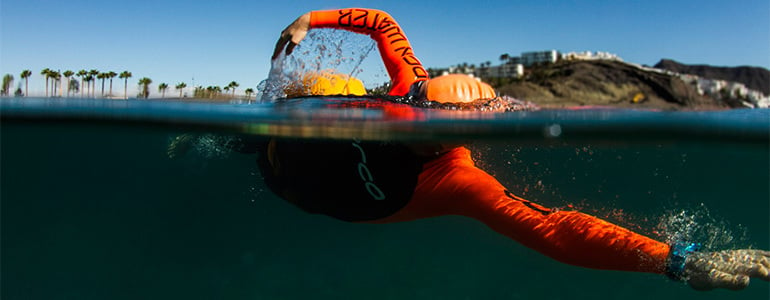
The road to Kona Ironman: Step three: Recovering for race day
The legendary Kona Ironman is just around the corner and Suunto triathlete Åsa Lundström is getting excited. We continue following her steps towards race day in our four part series. Step one was planning, step two was progress and, in this instalment, we look at her recovery or tapering time before the big day. The Kona Ironman is unforgiving. If a competitor gets to the start line not 100 per cent, the 226.27 km course can exact a heavy toll. Champion Swedish triathlete Åsa Lundström has been living in the Canary Islands for over a month, preparing for the race which will be the greatest test of her mind, body and spirit. The heat, humidity and volcanic terrain are similar to the conditions in Kona, Hawaii, making the island a better training place than her home in Scandinavia.
Click here to read about how Åsa became an elite triathlete
After an intense training cycle over the last months, for the last two of weeks Åsa has been fine-tuning her body and mind for the race. During the first week of her two week tapering period, she reduced her training volume from 35 to 20 hours. In the week immediately before the race, she cuts it from 20 to between eight and 10 hours. “This stage involves easing off the volume of training and sleeping and eating properly, and making sure to rest between the sessions to ensure quality training that feels really good,” Åsa says. “This is usually the first time when I can start sensing whether I am in good shape.” The big danger is getting to the start line over-trained. Avoiding this is crucial.
Click here to read about how to use your Ambit3's recovery features
“It’s important to pay close attention to the body’s signals,” Åsa says. “It comes down to having the experience of knowing the different signs of fatigue from hard training, and accumulated fatigue leading to overtraining. “Sleeping enough, eating enough – and frequently enough – are important for recovery.”
Åsa also writes a detailed training diary for her coach Cliff English to read for an objective perspective. Cliff looks out for negative signs and patterns that can sometimes be difficult for her to see herself. “Three weeks of hard work, good fun and nice company in this lovely place has come to an end,” Åsa says. “The journey continues and the countdown has begun! Bring it!”
Tune in next week for the final instalment of four part series about Åsa – her ideal race day in the Ironman World Championship in Kona.
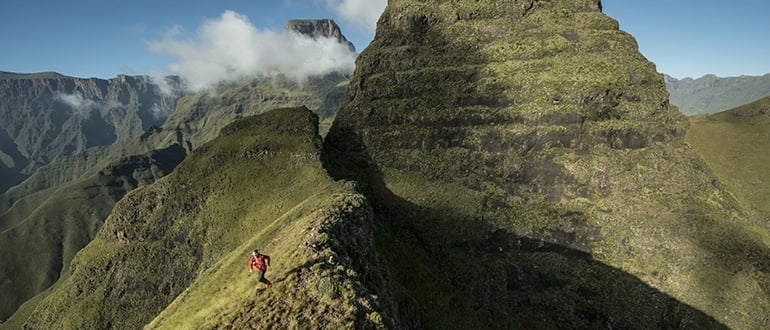
6 amazing training routes from Ryan Sandes
Ultra runner Ryan Sandes has traveled the world to run some of its sweetest single trail. Consider him, then, your go-to trail aficionado! Check out below the six trail running routes he picks as the cream of the crop! Coming from Cape Town, South Africa, ultra runner and Suunto ambassador Ryan Sandes is at home running on coastal trails by the ocean. But while his roots are in Cape Town's surf beaches and the trails above in its mountains, over time he has found more and more inspiration in alpine environments. This year, for example, he's been training in mountains in Californina and the French Alps.
Below, he shares his six favorite running routes from South Africa and the United States.
Read Ryan's tips about how to go the (ultra) distance!
San Fran 50 miler, San Francisco, USA
Distance: 78.78 km Time: 06h45m Ascent: 3125 m Decent: 3137 m Highest point: 554 m Why: The Marin Headland is really spectacular and the coastal running makes me feel like I am back at home in South Africa. The trails are really fast and runnable. The Headlands are always abuzz with runners, mountain bikers and dog walkers making for a great friendly atmosphere. There are some great coffee shops right next to the trail which is an added bonus.
Big Bear Mountain, California, USA
Distance: 52.14 km Time: 04h35m Ascent: 1104 m Decent: 1091 m Highest point: 2394 m Why: I spent six weeks in Big Bear earlier this year training for the Western States 100 miler. I really enjoyed my time there and developed a special bond with the mountains. The scenery is epic and there is a great variation of trails from open fire roads to really technical single track. This was one of my final long runs I did in preparation for the Western States.
Click here for Ryan's tips on how to recover like a pro!
Glacier Point, Yosemite National Park, USA
Distance: 17.76 kmTime: 02h09m Ascent: 1008 m Decent: 1031 m Highest point: 2195 m Why: The Yosemite National Park is one of the most beautiful places I have been to. Ha! I get itchy feet everytime I get to the National Park and just can't stop running. The run up to Glacier Point is a nice gradual climb and the views from the top are absolutely breath taking. This is the perfect recovery run to take it easy and enjoy the scenery.
Skyrun Route, Drakensberg, South Africa
Distance: 96.05 km Time: 12h36m Ascent: 4760 m Decent: 4579 m Highest point: 2674 m Why: The Skyrun is a 100 km self-navigational run across the Drakensberg Mountains. There are no proper trails to follow and you basically aim for the peaks and ridgelines ahead of you. It is a really remote area, at altitude and is the perfect place for me to train for big mountain races. Running in the Drakensberg Mountains makes me feel really small and it can be super humbling. © Kolesky/ Nikon/ Red Bull Content Pool
Lion's Head, Table Mountain, South Africa
Distance: 04.05 km Time: 0h29m Ascent: 370 m Decent: 372 m Highest point: 654 m Why: Lion's Head is an iconic mountain right next to Cape Town's city centre, with panoramic views of Cape Town and Table Mountain from the top. The trail starts off on an open fire road but as you climb up the mountain the trail gets more technical with ladders and chains towards the top. This is one of my shortest training sessions but I enjoy pushing myself on this run. It’s a real lung buster!© Nick Muzik/Red Bull Content Pool
Table Mountain Crossing, South Africa
Distance: 15.08 km Time: 02h02m Ascent: 1070 m Decent: 949 m Highest point: 1045 m Why: Table Mountain is an extension of my back garden and my favorite mountain to train on. I love being able to see the ocean from the summit and I feel really at home on this mountain. The Table Mountain Crossing trail is very technical with lots of scrambling and you have to keep an eye out for giant snakes in summer. The mountains inspire me to dream but the ocean is were my roots are. © Craig Kolesky/ Red Bull Content Pool
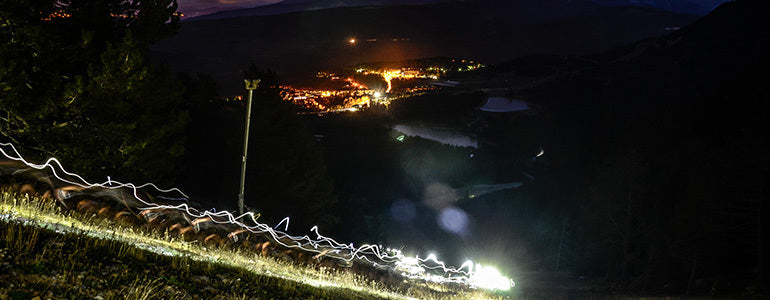
7 reasons to love running at night
True, you may not get to enjoy the same distant views, but there are good reasons to love running at night, says elite trail runner Gediminas Grinius – who trains on top of his full time job. Here are his top 7 reasons to put on your headtorch and high visibility jacket and get out the door for a night run!
Aside from working full time, Gediminas is also a father of two. © Gediminas Grinius
Explore your wild side
At night your senses are more attuned says Gediminas. “With less of an emphsis on vision, you become more alert to your surroundings and that brings out your wild side, especially when alone. And that’s the best remedy after a long day in the office.”
Escape the heat
Running in warm temperatures isn’t all great, says this year’s Transgrancanaria winner. “Running at night lets you avoid the day’s heat,” he says, “which is better for training”.
Find new beauty
“Running at night breaks up the routine and you can find new beauty in the same trails – especially for those like me who don’t have a lot of hills to train on.”
Avoid the traffic
Turn your commute into training, says Gediminas. “That way you avoid the traffic and you beat the ‘no time for sport’ excuse. Commuting to the office in the winter months means running in the dark is unavoidable,” he adds.
Prepare for ultras
Use night running to prepare for an ultra. “Almost all 100 mile races have a night element in it,” he says. And for regular trail runners, most 100 km races have a night element as well!”
Improve your technical downhills
“While running at night you must trust your sixth sense more often,” says Gediminas. “Sometimes your feet are your only sensors on the ground and you have to turn your brain off and trust your feet to know where to step. This is exactly the same as when you have to run on technical terrain so running at night is a good way to make you better on super technical downhills.”
Unleash the dog!
“Zoro is my best running partner and the enjoys freedom as much as I do, but because of a lot of distractions during the day (people, other dogs) it's the best time to set him free at night.”
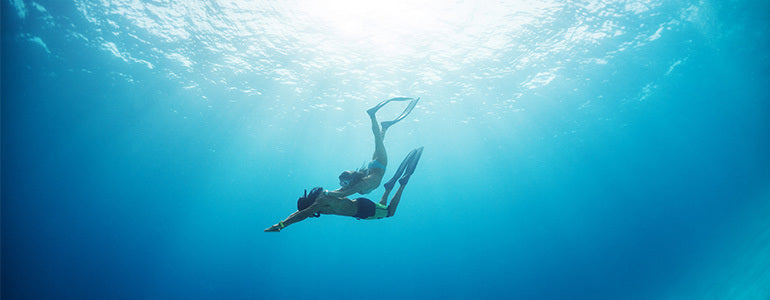
Finding harmony in the deep blue sea
Japanese freediver and former model Tomoka Fukuda has one dream: to explore the world’s oceans as a wandering freediver. One word describes what Tomoka Fukuda loves about freediving. “Harmony,” she says, “between my body, my mind and the ocean. “When I dive in the ocean, I am diving into myself. I can see inside myself clearly. When I have a good dive, I feel that I am a small part of this world where everything is connected.” Tomoka wasn’t always so Zen. Prior to first freediving eight years ago, she worked as a model and ran her own beauty salon. She’s the first to admit it: as a model, she was a little bit crazy – lots of parties, busyness and stress. But then she found freediving. “The ocean has taught me many things,” the 37-year-old says on the phone from Greece, where she is currently training. “You can’t lie to the ocean. It’s like a mirror. I learned that our limitations are only in our mind and you can extend them.”
Click play to watch this video of Tomoka diving with Fernando Stalla
Originally from Japan’s northernmost island Hokkaido, Tomoka’s enduring connection to the ocean began on family holidays to a cousin’s home by the sea. She went from a child splashing around at the beach, to becoming a competitive backstroke swimmer. But her life really changed when she visited Okinawa, Japan’s southernmost island, and tried scuba diving and freediving for the first time. “The ocean was so beautiful that it stunned me,” she says. “I decided to relocate my whole life there so I could be close to it.” There, Tomoka met an experienced spear fisherman who became her mentor. They went freediving every week and he taught her everything he knew about freediving and the underwater world. Before long freediving became more than just a leisure sport. The AIDA Depth World Championship was held in Okinawa in 2010 and Tomoka helped as a safety diver for the competitors. “I saw so many amazing freedivers and I knew I wanted to do that too so I decided then to train seriously.” Just one year later, Tomoka competed in the AIDA Depth World Championship in Kalamata. The following year, during the 2012 Suunto Vertical Blue freediving competition in Dean’s Blue Hole, Tomoka dived to 80 m, realizing a long held goal. That same year, she also won Suunto’s People’s Choice Award for Best Female Newcomer at the AIDA Depth World Championship. And she won second place in the women’s division at the 2015 Suunto Vertical Blue competition. The wandering freediver is also well on the way to fulfilling her dream of freediving all around the world. This year alone she’s plunged into the waters of seven countries. Her favourite locations to date are Greece, the Maldives, the Bahamas, Italy’s Puglia and Egypt’s Dahab. “Before, I wanted everything, now I don’t need anything,” Tomoka says. “I am fulfilled solely by ocean happiness and do not have material desires.
“I just want to dive in the ocean. The ocean is my world.”










































































